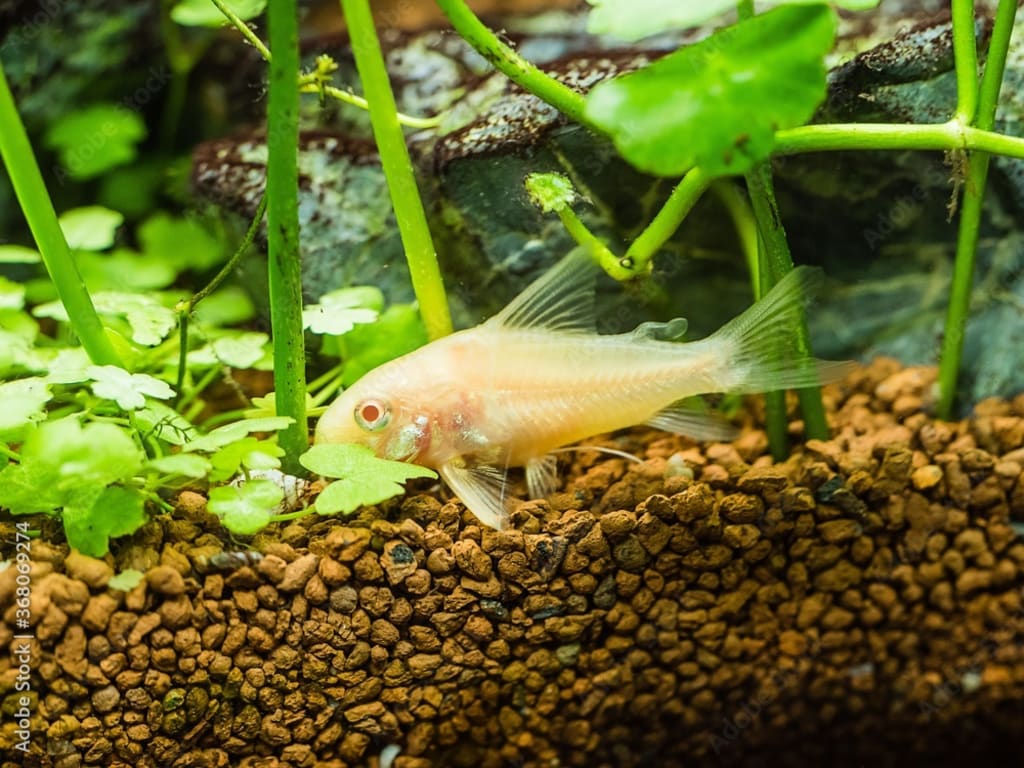Creating a Corydoras-Friendly Environment with Substrate
Corydoras catfish are beloved by many aquarium hobbyists for their playful and social behavior. To ensure that your Corydoras thrive in their aquarium environment, it is important to create a substrate that mimics their natural habitat.

Corydoras catfish are a popular choice for aquarium enthusiasts due to their playful and social nature. These small, peaceful fish require a specific environment to thrive, and one of the most important aspects of this environment is the substrate. In this article, we will discuss the factors to consider when choosing aquarium substrate for Corydoras, how to set up a Corydoras-friendly environment, and tips for maintaining the substrate.
Understanding Corydoras
Corydoras catfish are native to South America and are typically found in rivers and streams with sandy or muddy bottoms. In the wild, they live in schools and enjoy digging and foraging for food. In an aquarium, they should be kept in groups of at least six to promote social behavior.
Corydoras are bottom feeders, and their delicate barbels are sensitive to rough substrates. It is important to choose a substrate that will not harm the fish's sensitive barbels and will mimic their natural habitat.
Factors to Consider When Choosing Aquarium Substrate for Corydoras
When choosing aquarium substrate for Corydoras, there are several factors to consider. These include:
Size and texture of substrate particles: Corydoras have delicate barbels that are sensitive to rough substrates. It is essential to choose a substrate with small, smooth particles to avoid damaging their barbels.
Water hardness and pH compatibility: Corydoras prefer a slightly acidic pH level between 6.0 and 7.0. It is important to choose a substrate that is compatible with the water hardness and pH of your aquarium.
Ability of substrate to support plant life: If you plan to include live plants in your aquarium, it is important to choose a substrate that will support plant growth. Substrates with high levels of nutrients can be beneficial for plant growth.
Ease of cleaning and maintenance: Substrates that are easy to clean and maintain are essential for a healthy aquarium environment. Substrates that are difficult to clean can lead to the buildup of harmful bacteria and algae.
Choosing the Right Substrate for Your Corydoras
There are several substrate options for Corydoras, including sand, gravel, and soil. Each substrate type has its advantages and disadvantages for Corydoras.
Sand: Sand is the most popular substrate for Corydoras due to its small particle size and soft texture. Sand closely resembles the natural habitat of Corydoras, and it allows them to dig and forage for food. Sand is also easy to clean and maintain, making it an ideal choice for aquarium enthusiasts.
Gravel: Gravel is an affordable and easy-to-clean substrate option. However, it is important to choose gravel with small, smooth particles to avoid damaging the fish's delicate barbels. Gravel is not as natural-looking as sand, but it can still provide a suitable environment for Corydoras.
Soil: Soil is a less common substrate option for Corydoras, but it can provide essential nutrients for plant growth. Soil can be beneficial for aquarium enthusiasts who want to include live plants in their aquarium. However, soil can be difficult to clean and maintain, and it may not be the best option for beginners.
Setting Up the Corydoras Environment
Once you have chosen your substrate, it is important to properly place and arrange it in the aquarium. Corydoras prefer a diverse substrate environment with areas of both sand and gravel. It is also important to include hiding places and plants for the catfish to feel secure.
To set up the environment, begin by thoroughly rinsing the substrate with water to remove any dust or debris. Place the substrate in the aquarium, making sure to create areas of both sand and gravel. Add hiding places, such as rocks or driftwood
Troubleshooting Common Issues
Common problems with substrate in a Corydoras environment include ammonia buildup and substrate compaction. These issues can be prevented by properly cleaning and maintaining the substrate, monitoring water parameters, and avoiding overfeeding.
Troubleshooting Common Issues
Common problems with substrate in a Corydoras environment include ammonia buildup and substrate compaction. These issues can be prevented by properly cleaning and maintaining the substrate, monitoring water parameters, and avoiding overfeeding.
Conclusion
Creating a Corydoras-friendly environment with substrate is crucial for the health and wellbeing of these beloved catfish. By considering the factors mentioned above, choosing the right substrate, and properly setting up and maintaining the environment, your Corydoras will thrive in their new home.






Comments
There are no comments for this story
Be the first to respond and start the conversation.